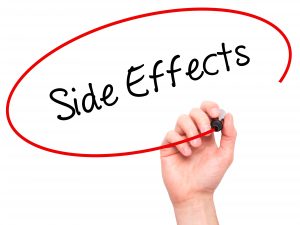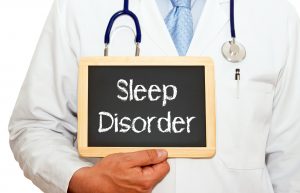Aim: To understand the complex nature of sleep disturbance occurring following brain injury and how this adversely impacts upon all aspects of the person’s functioning and quality of life.
There are two important processes governing sleep. The first is the internal body clock, which is located in the hypothalamus and regulates sleep (in part, by causing melatonin to be secreted from the pineal gland at night in response to dim light) but also many other bodily processes. The second is the homeostatic sleep drive i.e. the build up of pressure for sleep during waking hours until sleep is hard to resist and ensues. The parts of the brain governing sleep may be damaged as a consequence of brain injury, thus resulting in sleep disturbance.
Sleep disturbance is very common after brain injury and can be highly distressing for the person affected, resulting in a negative impact on their daily routine and quality of life. Sleep problems lead to an exacerbation of the person’s experience of fatigue, also common following brain injury.
Problems with fatigue can also adversely impact upon the person’s sleep pattern. This leads to feelings of daytime sleepiness which in turn results in the person partaking of excessive sleep during the day. This can have an effect on their night time sleep pattern, resulting in night time wakefulness which then contributes to increased daytime fatigue.
Both sleep disturbance and problems with fatigue can have a significant negative impact on the person’s mood, behaviour, levels of irritability, experience of pain, cognitive and communicative abilities. These problems can have a negative impact on others within the hospital or care environment.
Sleep disturbance and fatique can also have a detrimental impact on the rehabilitation process, affecting the person’s ability to fully engage with therapy. These problems can begin to affect the person from the very early stages following brain injury, through the period of rehabilitation and can continue to have a significant impact on their life following discharge from hospital. These problems can persist on a long term basis and may be difficult to treat in some cases.
In the early stages following brain injury the sleep wake cycle is often totally disrupted.  In the period of Post Traumatic Amnesia patients commonly experience sleep disturbance which can lead to an exacerbation of confusion. This presentation can also occur in the context of infection, pain, or as a result of medication side effects. The use of sedative medications (e.g. opiates, benzodiazepines, antipsychotics) can cause problems of sleep disturbance and/or exacerbate pre existing problems.
In the period of Post Traumatic Amnesia patients commonly experience sleep disturbance which can lead to an exacerbation of confusion. This presentation can also occur in the context of infection, pain, or as a result of medication side effects. The use of sedative medications (e.g. opiates, benzodiazepines, antipsychotics) can cause problems of sleep disturbance and/or exacerbate pre existing problems.
A sudden complete loss of normal day-night pattern in an individual who has previously been sleeping well following brain injury should raise suspicions of secondary complications e.g. infection, pain and further neurological problems.
 After the acute period the commonest persisting sleep problems after brain injury are hypersomnia (excessive daytime sleepiness, or excessive total sleep time), insomnia (difficulty initiating or maintaining sleep) and obstructive sleep apnoea.
After the acute period the commonest persisting sleep problems after brain injury are hypersomnia (excessive daytime sleepiness, or excessive total sleep time), insomnia (difficulty initiating or maintaining sleep) and obstructive sleep apnoea.
It is common for both night-time insomnia and excessive daytime sleep to be problematic. In some individuals, this combination may in fact represent a circadian rhythm sleep disorder, in which the body clock runs late or, more unusually, early. It is important to recognise these circadian rhythm sleep disorders and attempt to improve the person’s sleep pattern. However, these problems can be difficult to treat. It is worth noting that this type of sleep disorder does not necessarily have a harmful effect on the overall quantity or quality of sleep, they may be getting enough hours of good sleep, but just not at the expected normal times.
Obstructive sleep apnoea is a condition in which the reduced airway muscle tone during sleep results in airway obstruction. This leads to snoring and poor quality sleep due to frequent brief periods of wakefulness through the night. Severe sleep apnoea causes excessive daytime sleepiness and can also lead to impaired cognition and cardiovascular risk. This is, in part, due to a possible reduction in oxygen supply to the brain and heart overnight. Obstructive sleep apnoea is more common after brain injury than in the general population. In addition, other risk factors for obstructive sleep apnoea include obesity and sedative medication.
Other unusual sleep disorders are thought to occur slightly more commonly after brain injury, although the reasons for this are not clear. Examples include:
- Narcolepsy (i.e. the inability to regulate the sleep-wake cycle leading to excessive day time sleeping and a disturbed sleep pattern).
- Periodic limb movement disorder (i.e. involuntary limb movements whilst sleeping).
Psychiatric disorders such as depression or anxiety disorders may cause insomnia and can commonly arise in the months or years following brain injury.
How to Help the Person With Sleep Problems
References
Mathias, J. L., & Alvaro, P. K. (2012). Prevalence of sleep disturbances, disorders, and problems following traumatic brain injury: a meta-analysis. Sleep medicine, 13(7), 898-905.
Wilson, S. J., Nutt, D. J., Alford, C., Argyropoulos, S. V., Baldwin, D. S., Bateson, A. N., … & Gringras, P. (2010). British Association for Psychopharmacology consensus statement on evidence-based treatment of insomnia, parasomnias and circadian rhythm disorders. Journal of Psychopharmacology, 24(11), 1577-1601.
Beetar, J. T., Guilmette, T. J., & Sparadeo, F. R. (1996). Sleep and pain complaints in symptomatic traumatic brain injury and neurologic populations. Archives of physical medicine and rehabilitation, 77(12), 1298-1302.